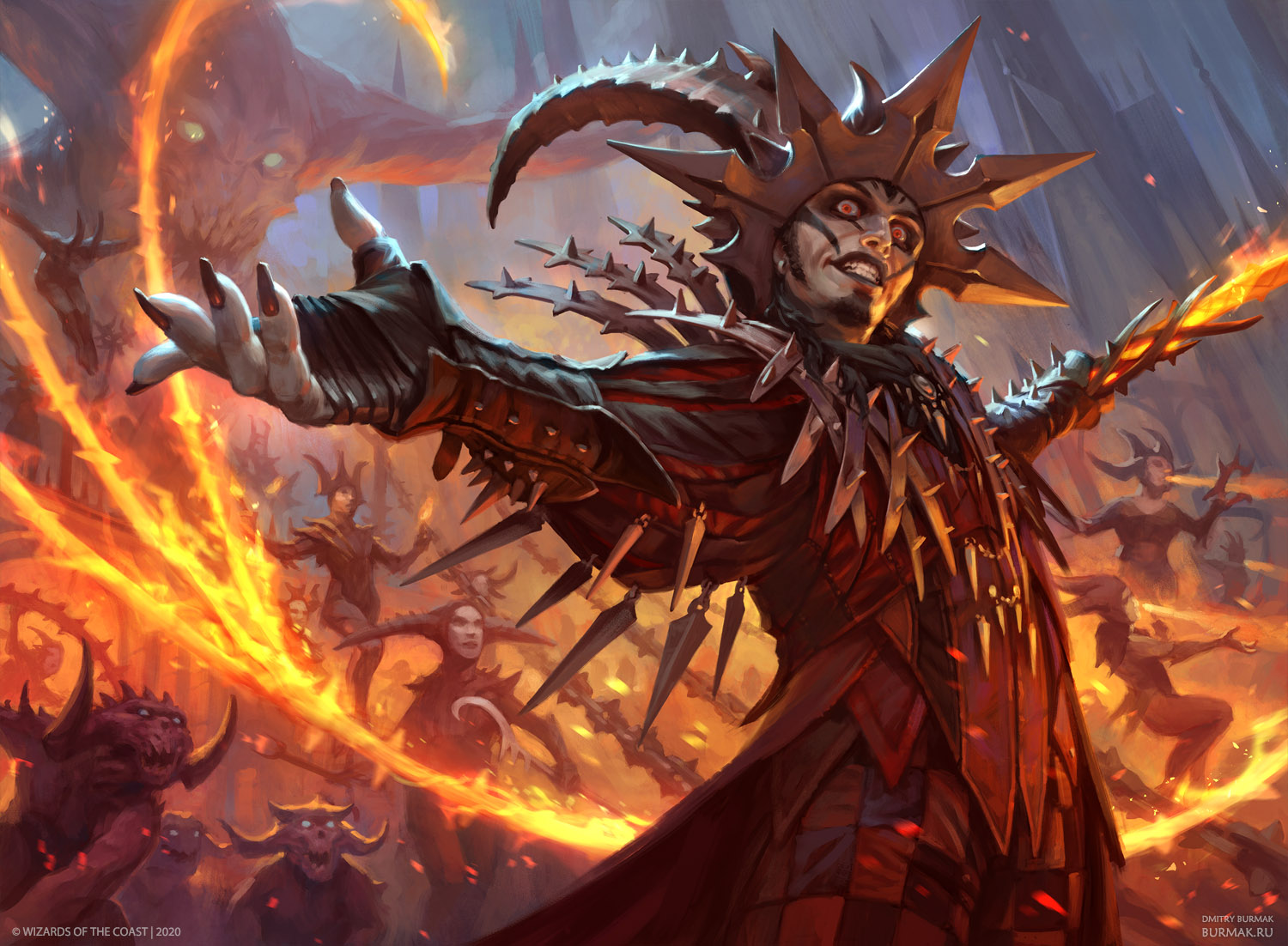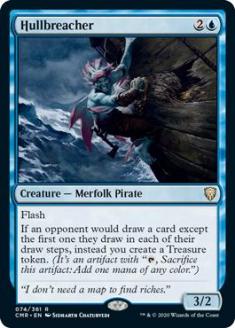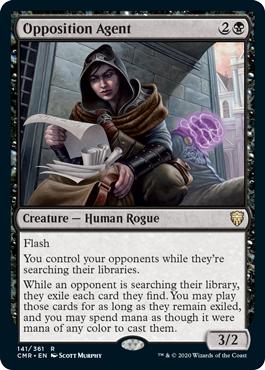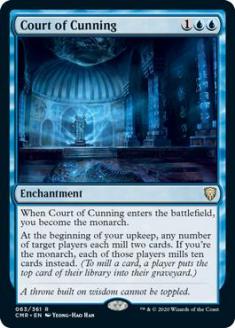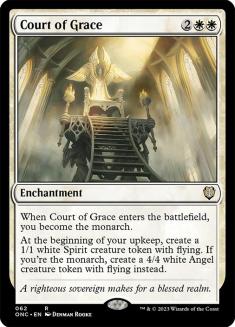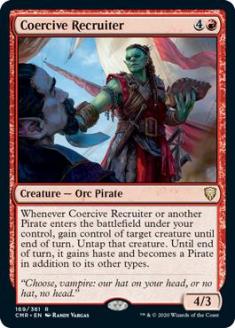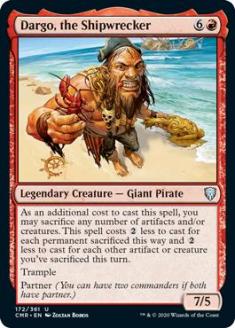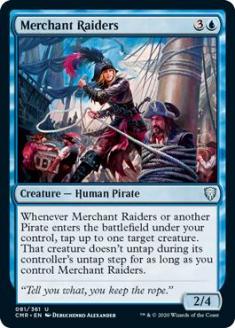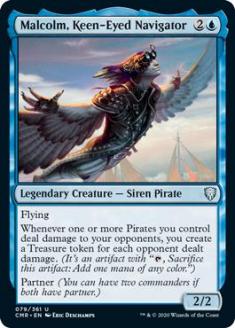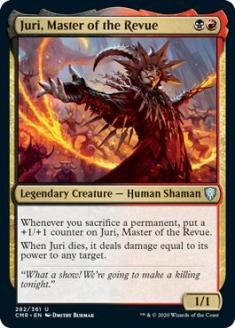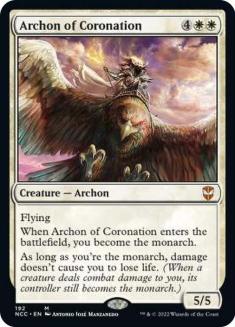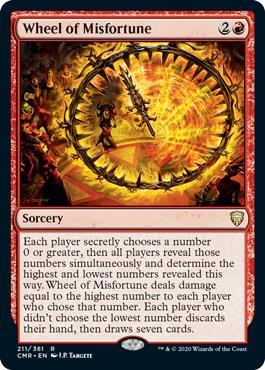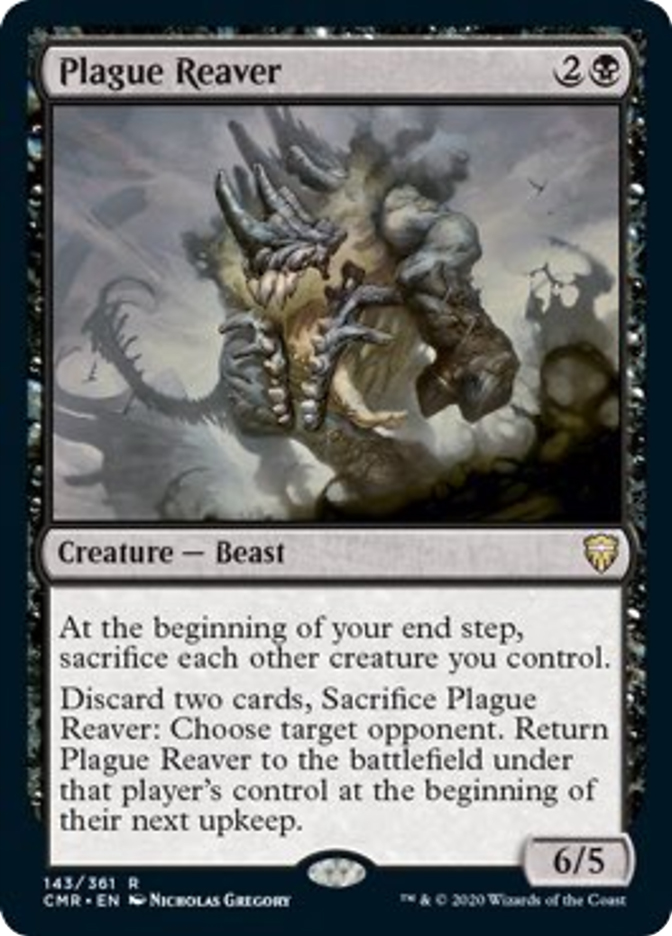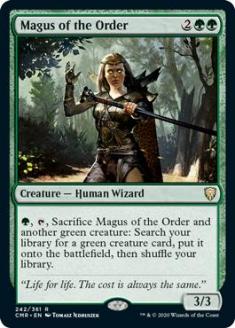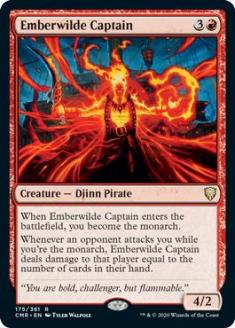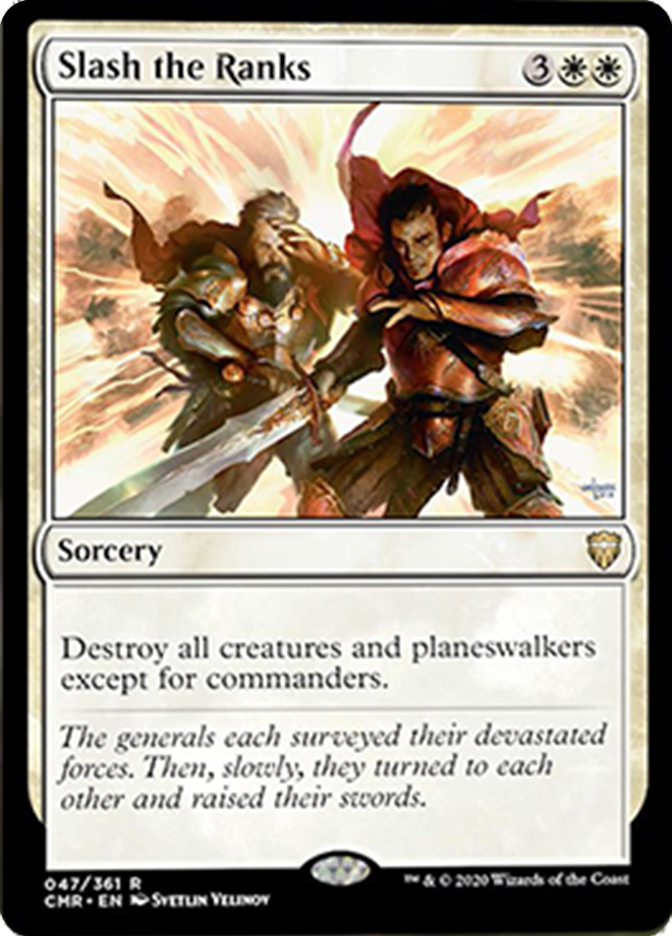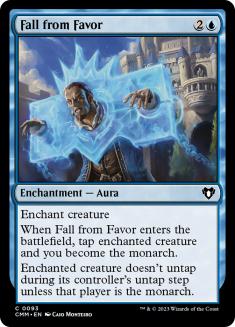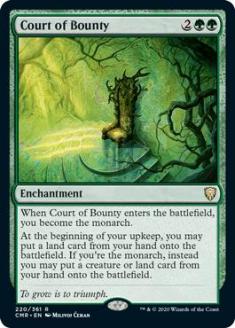Commander Legends releases next Friday, and while its focus is, of course, Commander, I always like to comb through these sets for interesting Cube cards. There are quite a lot of cards in Commander Legends that explicitly don’t work unless you have a commander, but once we get past Jeweled Lotus and all the nine-mana sorceries, there are some Cube gems as well.
Before I get to my Top 10 list, I want to address a few cards that I believe deserve some attention, but that I personally generally dislike for Cube play. If my list was in terms of raw power you’d see some or all of these cards on the list, though my focus is not just on cards being good, but also on cards that are interesting and fun.
These cards are both worth considering for heavily combo-centric environments as answers to tutors and broken draw spells. Hullbreacher even explicitly combos with your own Timetwister in a similar fashion as Narset, Parter of Veils. I find Narset to be extremely unfun and limiting on gameplay, and it’s one that I cut from Grixis Cube pretty quickly. Hullbreacher and Opposition Agent take most of what I dislike about Narset and give it flash. I like being able to interact against combo decks, but gotchas and debilitating prison effects have never polled well in my playgroups.
In truth, there’s a lot of nonsense in Vintage Cube, and once we’re talking about an environment with Black Lotus and Ancestral Recall it’s not unreasonable to include these cards, and I wouldn’t be surprised to see one or both make it into the Magic Online (MTGO) Vintage Cube. That’s about the only place where they really fit though, and for these reasons I don’t rank them highly in terms of “Cube cards” in a broad sense.
I’m honestly a little shocked that Court of Cunning actually exists. Outside of the monarch mechanic it doesn’t seem appealing in multiplayer, and it’s an order of magnitude more miserable for Cube than Jace, Memory Adept, a card that is near-universally frowned upon with regard to Cube Draft. Court of Cunning would easily be the most powerful Cube card in the set if anybody considered it a reasonable card to put in their Cube.
Court of Grace isn’t as absurd, though my gut reaction is that once it hits the battlefield you’re just playing a completely different game. Not only does it grant its caster the monarch, it also generates a stream of tokens that are very good at contesting and/or defending status as the monarch. The monarch mechanic itself is something that is a bit contentious in Cube. I actually ran a poll on Twitter over the weekend to try to get a read on where people stood on it.
From the response I gathered that the mechanic is somewhat more loved than it is hated, though it’s really important to be careful with the monarch mechanic in Cube. Given how powerful being the monarch is, the cards tend to end up being too powerful when they make it easy to leverage being the monarch, or too weak when it’s too easy for your opponent to take the monarch from you. You’ll find some monarch cards on my Top 10 list, though I personally believe that Court of Grace is so powerful that it’s only really reasonable for Vintage Cube, and is not a card that I would generally recommend for Cube play.
Let’s get on to that Top 10 list then, shall we?
10. Coercive Recruiter
Now and again, it’s important to pay lip service to the Splinter Twin lobby. Coercive Recruiter is generally worse than Zealous Conscripts for being limited to only targeting creatures and for not having haste, but it combos with Splinter Twin and Kiki-Jiki, Mirror Breaker all the same. That alone makes it a reasonable consideration for any Cube featuring such combos.
It’s unlikely that Coercive Recruiter will be triggering off other Pirates in the average Cube, though it’s worth noting that the ability checks on a Pirate entering the battlefield, not on casting a Pirate spell, which means that cloning Coercive Recruiter will give you two Threatens.
If you’re interested in an Ixalan-themed Cube or just Pirate tribal generally, then there are several cool options in Commander Legends for you. Coercive Recruiter and Malcolm, Keen-Eyed Navigator are two cards that I find actively exciting to this end.
9. Juri, Master of the Revue
Juri is worse than Dreadhorde Butcher in your average beatdown deck, but if your Cube has a heavy sacrifice theme, then it’s easy to see how Juri can quickly get out of control. Getting counters for sacrificing any permanent is a big deal, and while Mortician Beetle wasn’t turning many heads, Juri threatens to get larger more easily and can deal a ton of damage on its way out the door.
Sacrifice effects have been getting a ton of support lately and it’s easy to see how Juri could fit into a Cube alongside cards like Witch’s Oven; Mayhem Devil; and Korvold, Fae-Cursed King. Juri seems like an easy inclusion in a lot of Peasant Cubes as an uncommon, though I’m confident that the card can do work in environments with power levels similar to Modern Cube as well.
The most important thing that Juri, Master of the Revue has going for it is costing two. Cards that cost three or more and multicolor cards are both spaces crowded with a ton of powerful options. Thematic cards that cost one or two tend to have a more dramatic impact on how a Cube plays based on raw efficiency alone.
8. Archon of Coronation
Archon of Coronation looks to me like a card that does monarch exactly right. It’s a pretty large body that should be good at attacking or blocking and offers an ability that makes profitably attacking into you while you’re the monarch difficult.
You’re getting what you pay for at six mana, though white has lagged behind the other colors in this department for some time. Sure, Elspeth, Sun’s Champion is excellent, but I can’t remember the last time I felt like giving Sun Titan a serious look. Very few six-drops have high value over replacement in Cube these days, but it’s worth noting that Sun Titan is still showing up in some Cubes that also feature Grim Monolith. I’m in favor of turning every Sun Titan into an Archon of Coronation.
7. Wheel of Misfortune
Is this card cooler than it is good? Almost undoubtedly. But you have to admit that it is incredibly cool, so there’s some room there for it to be somewhat good.
I haven’t had the opportunity to try Wheel of Misfortune yet, though it does fit very well into the typical play patterns of aggressive red decks. You spend the early turns throwing everything you have at your opponent, and then around Turn 4 or 5 the game starts to grind into a halt and you either find a way to cross the finish line or your opponent stabilizes at, presumably, a relatively low life total. Now imagine that you’re playing such a game as the red player and you draw a Wheel of Misfortune.
As long as you’re able to apply early pressure to your opponent’s life total, then you get to bully them somewhat with the damage that Wheel of Misfortune threatens to deal, and both gambling with your own life total and the threat of drawing Wheel of Misfortune when you’re behind offer some cool tension. I also really like the idea of resolving a Wheel of Misfortune when both players are at twenty life and the battlefield is largely at parity. The more I think about this card, the more I like it.
6. Plague Reaver
Is my attachment to this card merely evidence that I’m pining for the days when Phyrexian Negator wasn’t embarrassing? Possibly. But I think that this card has some great things going for it.
Rotting Regisaur has been popping up in a lot of Cubes largely for the discard outlet coupled with a meaty threat in and of itself for Reanimator strategies, and because it’s a card that plays reasonably in beatdown decks as well. Plague Reaver is comparably good as the standalone Reanimator threat and discard outlet, and while it is kind of garbage in an aggressive deck, I could see it playing well in a controlling one.
It’s a high-investment play and it does come at the cost of gifting your opponent a 6/5, but I would believe that the discard ability comes in handy from time to time against creature decks. Plague Reaver is kind of a combo with Maze of Ith, and I’d be surprised if the card somehow turned out to be wholly unplayable in Cube.
5. Magus of the Order
Is this card a lot worse than Natural Order? Is it ever! There’s a lot of room to be worse than Natural Order while still being excellent though.
If we’re talking about using this card to find Craterhoof Behemoth and win the game, then you can’t really dance around the fact that it takes a turn of investment and dies to removal. However, the more important consideration regarding Magus of the Order’s role in Cube has to do with its mana cost.
Green fours are a putrid lot. Questing Beast; Thrun, the Last Troll; and Obstinate Baloth are regular features of the MTGO Cubes, and they are consistently disappointing options for the green decks given that these decks tend to care about generating overwhelming mana advantage and casting some unbeatable spell rather than attacking and blocking. Magus of the Order at least threatens to turn into a Terastodon and actually end the game, rather than just being a 4/4.
I don’t generally love it when a Cube features cards that are dramatically less powerful versions of other cards in the Cube, but this is somewhat unavoidable in Vintage Cube, and Magus of the Order is a significant upgrade over several of the green fours currently featured.
4. Emberwilde Captain
Red fours are a tough slot, largely because aggressive red decks want to play very few cards that cost four or more mana. I believe Emberwilde Captain to be a serious consideration for many of the same reasons that I like Wheel of Misfortune.
Cards like Koth of the Hammer and Hellrider close immediately when they show up in the easy games where you curve out relatively unimpeded. Emberwilde Captain gives you some staying power in the hard games. It will always be good for at least one extra card as you become the monarch, and both its ability and body threaten to deal meaningful damage to the opponent.
Koth and Hellrider remain the most threatening red fours for high-powered Cubes that support aggressive red decks, but I believe that Emberwilde Captain gives most of the other options a run for their money. Hazoret the Fervent shows up in a lot of Cubes and it’s nowhere near as good in Cube as it was in Standard. I currently have a Hazoret in my Grixis Cube and I intend to try a swap with Emberwilde Captain.
3. Slash the Ranks
Finally we come to a card that explicitly references commanders that arguably gets a lot better in non-Commander formats. You can read this one as “destroy all creatures and planeswalkers.” You pay an extra mana for your Wrath of God, but Wrath of God never took down their Gideon, Ally of Zendikar.
Slash the Ranks also draws some comparison to Planar Cleansing, but the major upgrade is that you can use Signets to power out a Slash the Ranks without having to exile them to your sweeper. It is true that white controlling decks often want to play some planeswalkers of their own, but even still this card can effortlessly turn around some hopeless positions against multiple planeswalkers like few cards can.
Cards that reference commanders can be pretty aesthetically displeasing for formats that don’t involve commanders, and for that reason I could see having an aversion to Slash the Ranks. In terms of gameplay alone though, it’s a very powerful tool for white control decks.
2. Fall from Favor
Given my initial aside on Court of Grace, this pick might look very odd. In truth, I don’t know if Fall from Favor is a good or bad implementation of the monarch mechanic for two-player Cube games. It’s a card that is already getting a lot of attention as likely being problematic for Pauper, though Cube is quite a different beast.
My hypothesis is that Fall from Favor presents a significant liability for decks that are bad at attacking given how easily a haste creature can show up and take the monarch from you even if you had previously stabilized the battlefield. I believe that Fall from Favor could be a cool tool to put a lot of pressure on combat in aggressive mirrors. This mostly comes up in Cubes that try to get away from blue being the color the just counters things and attempts combos, though it’s also not all that difficult to see a controlling deck successfully leveraging a removal spell that grants the monarch, however inefficient that removal spell might be.
I estimate that Fall from Favor could generate some very cool games in the right environment, and I could definitely see it being very powerful without being totally broken. I’m betting against Court of Grace being fun, but I’m willing to bet on Fall from Favor for now.
1. Court of Bounty
A lesser-known Ryan Overturf fact is that I force Mono-Green Ramp in Vintage Cube a lot. There’s just something about a lethal Crafterhoof Behemoth attack that’s viscerally satisfying, and so many of the mana creatures are just totally busted.
Court of Bounty is likely at a similar power level as Court of Grace, and I would certainly believe that it’s the sort of card that belongs exclusively in Vintage Cube, but there are some significant differences that cause me to give one the thumbs-up and the other the thumbs-down.
Court of Grace incentivizes playing a lot of reactive cards like Swords to Plowshares and Wrath of God and offers both a draw engine and a win condition at a very cheap rate for these do-nothing decks while also being a powerful curve-topper for the white aggressive decks.
Court of Bounty is more particular about the sorts of decks that it goes into given that it doesn’t serve as a win condition by itself, and green is generally worse at stopping the opponent from stealing the monarch. It’s a powerful card to ramp into, but there are real opportunity costs being paid here.
Again, I could see Court of Bounty ending up being one of those Vintage Cube-only-style cards, but I don’t see it as more offensive than Gaea’s Cradle in Legacy Cube. It’s at least worth a shot there. I’ve shown my bias, but I believe that playing with Court of Bounty in the ramp decks will be a very satisfying experience. It’s another green four-drop that makes sense in ramp decks as well, which is a big deal in high-powered Cubes.

